Blackberry Osage: features of the variety and the rules for its cultivation
Blackberry in nature - a creeping shrub with thorny stems and small sour fruits. You can eat them only a handful, and even then without much pleasure. But there is some charm in blackberries, a slight bitterness that distinguishes it from other berries. The varieties of garden blackberries, which are now grown in gardens, are strikingly different from the forest relative, while retaining its advantages.
Content:
- Osage Blackberry Description
- Blackberry propagation
- Growing features
- Blackberry care
- Preparing for winter
Osage Blackberry Description
Breeders have long been interested in forest blackberries and have begun to improve them in several ways. Plants should be easy to care for, have a high yield and a pleasant fruit taste.
To facilitate the care of blackberries, scientists created varieties with erect shoots, made the shoots less prickly or completely smooth. The fruits were made sweet and fragrant, and their size increased. About 300 varieties of garden blackberries are now known. They can be divided into groups according to the ripening period, the size of the fruits, their taste and color, the yield from the bush.
According to the shape of the bush, modern blackberry varieties are divided into several groups:
- Kumaniki (standing).
- Rosyaniki (climbing).
- Intermediate forms (semi-creeping).
The blackberry variety of American selection Osage belongs to the Kumaniks. It was created in 2012 by scientists at the University of Arkansas. The variety is distinguished by its high taste. The fruits are sweet, with a pleasant light aroma. Sugar content 11%. This is their main advantage over other varieties. The berries have a rounded shape and a relatively low weight, about 6 g. From one bush, you can collect from 3.5 to 5 kg of fruits.
The Osage variety is early ripening, the first fruits ripen in early June.
The variety has been freed from the main disadvantage of most blackberry varieties - tenacious thorny thorns. Its strong shoots are smooth, so it is much easier to care for the bushes. They are erect, which also facilitates basic operations. The advantages that facilitate the care of the bushes include disease resistance.
A positive characteristic of the Osage blackberry is its high transportability. The fruits are dense, can be stored for a long time without losing their appearance and taste. Therefore, the variety is suitable for growing on an industrial scale.
Blackberry propagation
The Osage Blackberry is propagated by:
- Rooted shoots.
- By dividing the bush.
- Root cuttings.
- Green cuttings.
Osage seeds are not propagated because this method does not allow preserving the characteristics of the variety. The easiest and most popular way is to root the shoots. To do this, young branches growing in the lower part of the bush or bent down from the shoot of this year are added dropwise to a depth of 10 cm. Water and mulch so that the moisture does not evaporate for as long as possible. After a few months, they will take root. A large number of short but strong roots will form at the end of the shoot. The following spring, shears are separated from the mother bush, dug up and transplanted to a new place.
In the northern regions, the bush is divided into several parts in early spring so that it does not freeze. In the south, it is better to do this in the fall so that the delenki have time to take root. When dividing the bush, cut root cuttings with buds, which are then rooted in the greenhouse.Green cuttings are planted in loose fertile soil so that only a third part looks out. Cover with a jar or cut bottle. Maintain high air humidity, periodically ventilate.
Growing features
Blackberries prefer to grow in neutral or slightly acidic soils. Do not grow it on limestone soils. Blackberry roots penetrate deep into the ground. Therefore, she is not afraid of drought.
Blackberries grow well in sunny areas and in partial shade. Sunlit fruits are much sweeter than those grown in the shade.
You can plant it in an area partially protected from the scorching sun rays. Berries reach on such bushes a week later than in open areas. For growing Osage blackberries, they choose an area protected from northern winds, which is well warmed up in the sun. Groundwater should not approach the soil surface closer than 1 meter.
Planting blackberries:
- Pits up to 50 cm deep are prepared two weeks before planting.
- The soil is mixed with rotted manure, mineral fertilizers... For one bush, 50 g of potash and 150 g of superphosphate are enough. If the soil is clayey, add sand and peat.
- The bush is immersed on a mound of earth poured into the bottom of the pit during the preparation of the pit. The root collar should be a couple of centimeters below soil level
- Fill the hole with soil. Watered and mulchso that moisture does not evaporate longer. Shoots are cut at a height of 25 cm.
- The distance between two adjacent bushes is 1 meter, between rows 2 m.
Blackberry bushes will need support. You can tie each bush to a separate peg or use trellises - a structure created from two metal pipes buried in the ground, between which two or three rows of wire are pulled. Shoots are tied to them in the spring, on which the crop will be formed.
Blackberry care
In the spring, as soon as the threat of severe frosts has passed, and the earth dries up, the shelter is removed. Underdeveloped, weak and diseased shoots are cut out. Shorten healthy. This will help keep the bush compact and increase the size of the berries. After pruning, the blackberry bush should have 4-6 strong healthy shoots with a height of 1.8. The length of the lateral branches is about 30 cm.
How to care for a shrub:
- Blackberries can do without watering. But adding water during flowering and ripening will increase the size of the fruit and increase the yield. At the same time, waterlogging of the soil should not be allowed.
- In summer, young shoots grow from the base of the bush. When they reach a height of 1.8 m, their tops are pinched. This stimulates the growth of side shoots, on which fruits will grow next year.
- After harvesting, the fruit bearing branches are removed. This will allow all the nutrients to be directed to the growth and formation of young shoots, on which the next year's harvest will be formed.
- The supply of nutrients after planting will be sufficient for the bush for the first 2-3 years. Then he needs feeding. In the spring, the plant is mulched with a thick layer of humus or compost... Like all varieties with erect shoots, Osage requires the addition of potassium, phosphorus and other trace elements. Blackberry bushes are fed with ammonium nitrate.
The Osage blackberry bush can grow in one place for up to 15 years. He is practically not affected by diseases. If the plant lacks nutrients or there is an excessive amount of them, the leaves change color, dry out and even fall off. Already formed fruits can dry out, the growth of shoots slows down. This disorder is called chlorosis.
The first manifestations of the disease are light spots on the leaves.
Blackberry leaves, buds and flowers can be damaged by the raspberry beetle. He hibernates in the ground. In order for the beetles to die in winter, the soil under the bushes is dug up in late autumn. The flowers and the ovary are eaten by the gluttonous shaggy bronze. She also hibernates in the soil. It is very difficult to deal with it. Can be collected by hand, shaken off onto tarpaulin and destroyed. Sometimes they are treated with Aktara 3 times a week.But the quality of the year after such treatments will be questionable.
Preparing for winter
Disadvantage blackberry low frost resistance can be considered. The creators of the variety claim that the bush tolerates frosts up to 13 ° C. Here the creeping shoots, like those of the forest blackberry, would be useful to the bush. Indeed, in regions where the temperature often drops below the declared one, the bush needs shelter.
It is not easy to bend the strong, upright shoots of the Osage blackberry. Therefore, they need to be gradually tilted in the direction on which they will winter. The procedure is carried out only with young shoots. After all, the old ones are cut out in the fall, without leaving them for the winter.
In late autumn, they carefully bend the shoots to the ground, so as not to break, and cover them.
Use nonwovens, plastic wrap, spruce branches, or combinations thereof. If you grow Osage blackberries without shelter, only the ground part of the bush will most likely die or freeze from frost. It happens that the root also dies, but live buds and roots remain, from which a new bush grows. In this case, you need to forget about the harvest for at least a year.
More information can be found in the video:



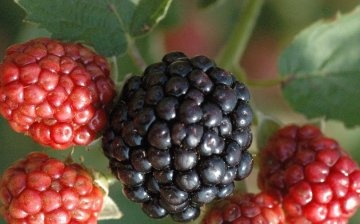

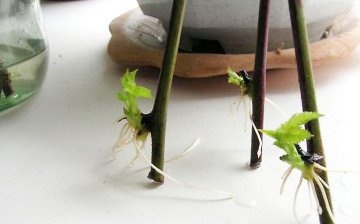
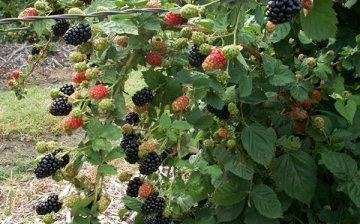
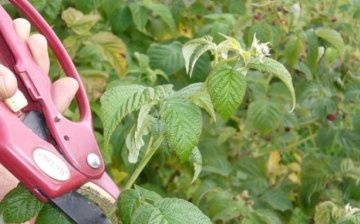







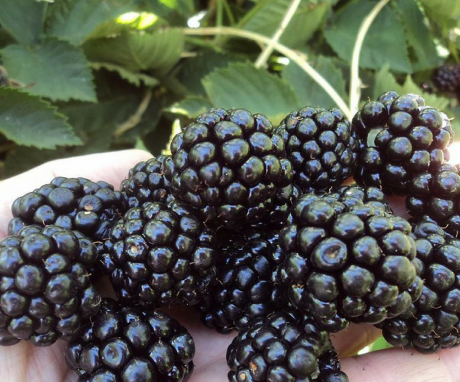
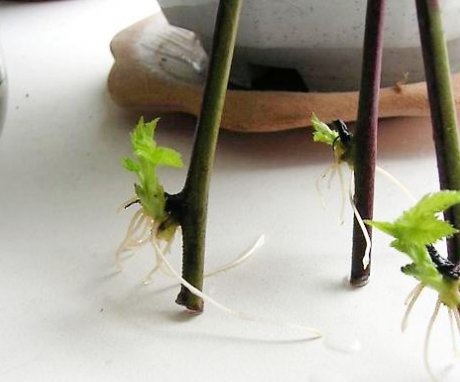
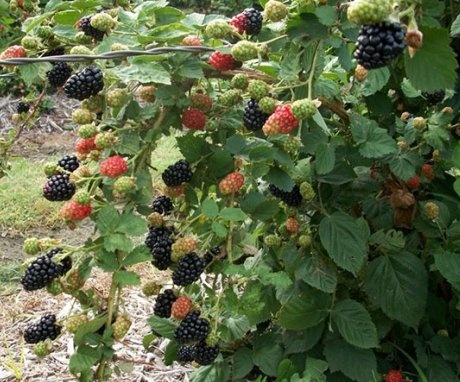
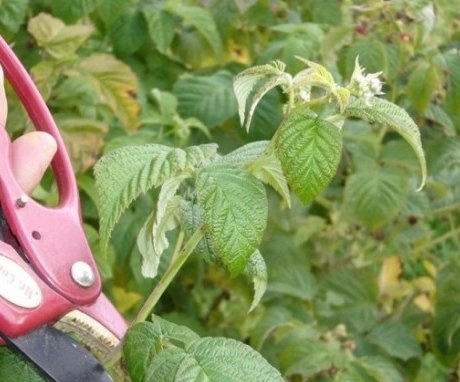
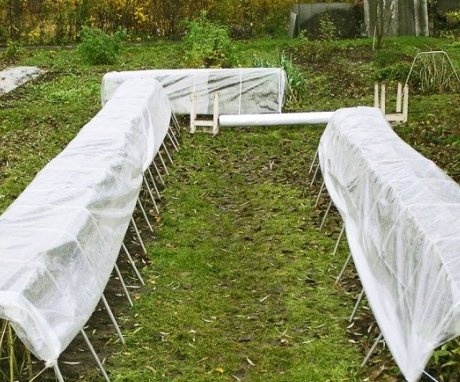
The Osage blackberry grows and does not require special care on our site, we do not even water it practically, but we have to make props, since the shoots are long enough and, if not propped up, spread along the ground.